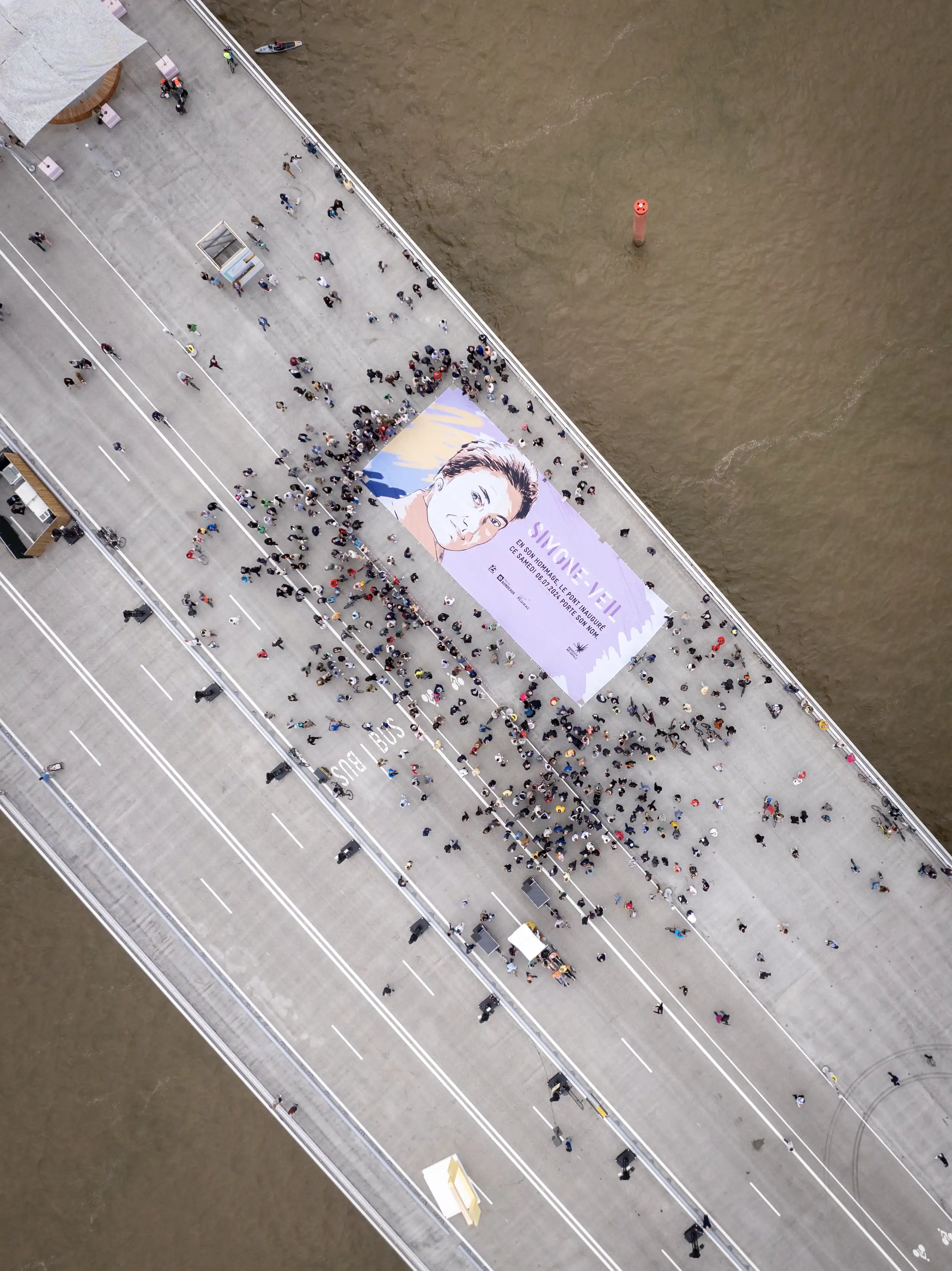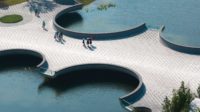At OMA’s Newly Debuted Simone Veil Bridge in Bordeaux, Vehicular Traffic Takes a Back Seat
.jpg?1721332020)
Architects & Firms
More than a decade after winning a 2013 competition to design a multimodal bridge across the Garonne River in the French port city of Bordeaux, OMA celebrated the public opening of the project—the Dutch firm’s first completed commission of its kind—on July 12. (Meanwhile, the 11th Street Bridge Park in Washington, D.C., a garden bridge designed by OMA’s New York office with OLIN, appears to be slowly chugging along).
.webp)
Opening day celebrations underway at Simone Veil Bridge. Photo by JB Menges, courtesy Bordeaux Métropole
Low-slung and a girthy 144-feet-wide, Bordeaux’s new Simone Veil Bridge, led by OMA partners Rem Koolhaas and Chris van Duijn with project architect Gilles Guyot, carries cars, pedestrians, cyclists, and public transit 1,800 feet across the Garonne, linking Floriac, on the river’s east bank, with Bègles and the city of Bordeaux proper on the west bank. From the offset, OMA pledged to eschew structural flourishes in favor of a modest, straightforward design: a grand, overwater boulevard or a civic platform that just happens to carry traffic. In a statement, Koolhaas referred to the bridge being “for the people, not connoisseurs.” (Around the river’s bend, the nearby Pont Jacques Chaban-Delmas, which debuted in 2013 as the highest vertical-lift bridge in Europe, offers plenty of eye candy for contemporary bridge aficionados.)

The double-wide bridge carries pedestrians, cyclists, public transit, and cars across the Garonne in dedicated lanes. Photo by Clement Guillaume, courtesy OMA
“Rather than concentrating on form, the project focuses on performance,” Koolhaas added. “Instead of spending its budget on structural gymnastics, it doubles the width with a public space to serve and connect the two adjoining communities that so far have not developed a strong identity.”
Van Duijn goes on to dub the bridge’s design as “anti-iconic,” referring to the multi-tasking work on infrastructure as being “like a stage but without the theater.”


Photos by Clement Guillaume, courtesy OMA
As a stage for civic activity, Simone Veil Bridge is an appropriately generously sized one. Joining dedicated lanes for car, public transit, bikes, and foot traffic (the last being the largest of the lanes), is a 91-foot-wide stretch of what OMA calls “neutral, unprogrammed space” for various cultural and commercial activities like farmers markets, art fairs, music festivals, and, because this is Bordeaux, wine-related gatherings. On both banks of the river are swaths of landscaped public space. (Parisian studio MDP Michel Desvigne Paysagiste served as landscape architect on the project while WSP and Groupe EGIS were the engineers.)
OMA mentions the Rialto Bridge (1591) in Venice as being an inspiration for the public square approach to bridge design. The firm elaborates in its opening announcement:

A banner honoring the new bridge’s namesake, revered late French stateswoman Simone Veil. Photo by JB Menges, courtesy Bordeaux Métropole
“Today, bridges are often narrowly evaluated in terms of their technical utility and their function as tools for the expansion of the city and its periphery, largely driven by cars. The role of bridges as urban spaces in themselves has been lost and is in need of resurrection.”
As for the new bridge’s name, it pays tribute to the Nice-born politician who served as the first female president of the European Parliament from 1979 to 1982. A survivor of the Holocaust and ardent champion of women’s rights, Veil is perhaps best known for the Veil Act, the 1975 law decriminalizing abortion in France. Veil, who died in 2017, was the country’s minister of health at the time of the law’s passage.
“The Simone Veil Bridge opposes the current obsession with bridges as triumphant feats of engineering or aesthetic statements and recovers their urban character as open spaces where events can happen,” proclaims OMA. “This is an alternative definition of what a twenty-first-century bridge can be.”




